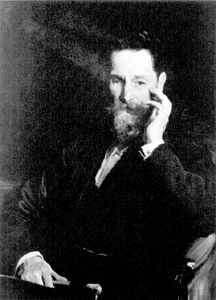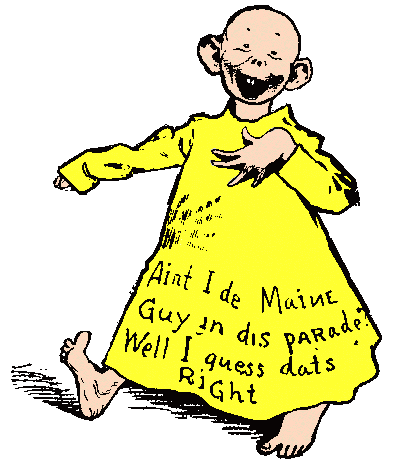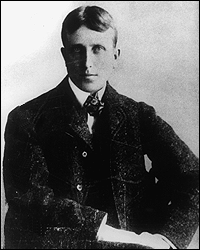Newspaper Wars
American journalism was undergoing changes in the 1890s. Traditionally, newspapers had strong party affiliations and were funded by party contributions. If an editor's party won the election, he (or in some cases she) might hope for a patronage job in the next administration, such as a position in a local post office. This system was still in place in many parts of the country. In urban areas, however, increasing numbers of journals were labelling themselves 'independent.' An example represented on this website is The Ram's Horn, whose editors took strong positions on prohibition, the trusts, and other issues, but considered themselves above party politics.
Other independent editors and newspaper owners pursued a very different 'independent' path, pioneering what later became known as 'yellow journalism' or 'tabloidism.' They built enormous circulations for their newspapers in the big cities, with celebrity columnists, aggressive sports coverage, and sensationalist news.

Two of the major practitioners of this new journalism were bitter rivals: Joseph Pulitzer (1847-1911) and William Randolph Hearst (1863-1951). While pioneering new types of journalism, they also began to accumulate the first inter-city newspaper empires. The Hungarian-born Pulitzer owned not only the New York World but also the St. Louis Post-Dispatch, which took a staunchly pro-Bryan stance. The World, on the other hand, joined the vast majority of Eastern papers that were anti-Bryan. The World was unusual, however, in using the trusts issue to attack Bryan, noting that much of his funding came from Western silver-mining interests. Such criticisms helped--even among McKinley supporters--to bring the issue of trusts and monopolies to the fore in subsequent years.

In September 1895, Hearst had acquired the New York Journal, one of the few major Eastern papers that supported Bryan. Hearst had inherited an enormous fortune, and he used much of it in a competition to take circulation away from Pulitzer. He knocked the price of the Journal down to a penny, whereas the World cost 2 cents, and established a dominant place in the New York popular press.
Homer Davenport, working for the Journal, became one of the nation's leading cartoonists and his caricatures of Hanna were widely copied in 1896 and 1900. Pulitzer, however, won his own victory during the campaign. Richard F. Outcault's 'Yellow Kid,' an early comic, appeared in the Journal's colored Sunday section and was wildly popular among New Yorkers. During the 1896 campaign, Pulitzer hired Outcault away from Hearst, and the Yellow Kid began appearing in the World. The Yellow Kid, along with Hearst's warnings in his San Francisco Chronicle, about the 'yellow peril' of Asian immigration, helped give this new brand of newspaper a denigrating name: 'yellow journalism.' Hearst and Pulitzer's fame, and the circulation of their newspapers, grew subsequently through their sensationalistic coverage of the Spanish-American War.

The New York World and Sun are vieing with each other to see which can invent the most palpable absurdity with regard to what they are pleased to term "arguments against silver." Day after day will be found columns about the loss to laborers and pensioners by reason of payment in 53-cent silver dollars. Side by side will appear statistics as to how much the silver mine owners will make by exchanging 50 cents worth of silver for 100-cent silver dollars.
The New York Journal, young Hearst's paper, deserves the encomiums of every silver man in this country. It is wonderfully well edited and the vigor of its answers to the absurdities of its opponents makes one feel after reading it pleased for a long time. Davenport's cartoons are unequaled and are to this campaign what Nast's were in the Grant-Greeley campaign.
--Nevada State Journal, October 9
